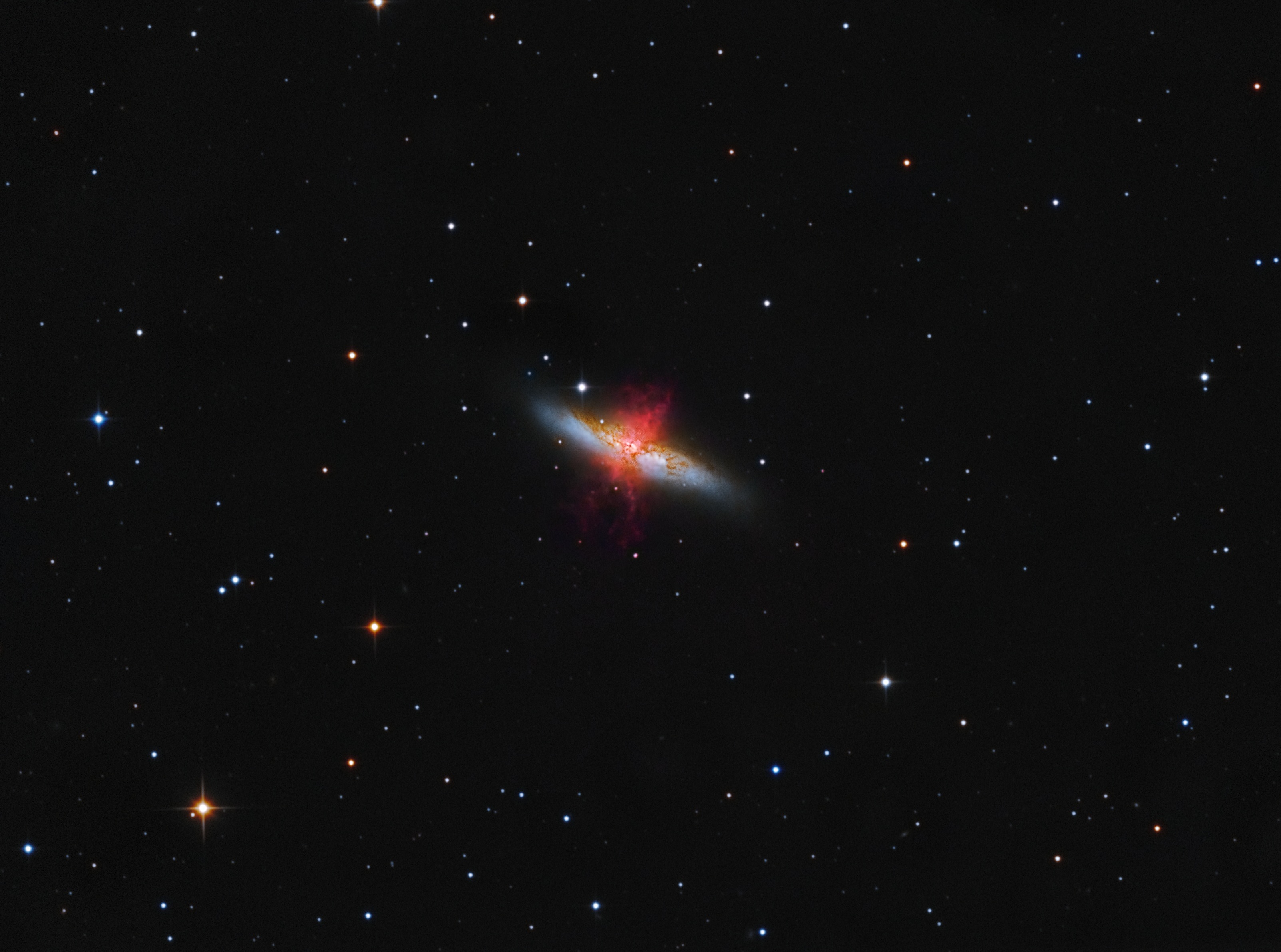The Exploding Cigar Nebula - M82
Camera: Finger Lakes Instrumentation MicroLine ML8300 with FLI CFW-2-7 Filter Wheel
Mount: Paramount ME
Scope: Supernova Astrograph - 12.5
Colors: L:R:G:B with added Ha
Exposure Time: Varied, plus 18x20 min Ha
Post-Production: MaxIm DL, CCDStack, PixInsight, and Photoshop CS5
This is a version of a previously posted image, but with added hydrogen alpha data to better show the red jets coming out of the core of this spectacular galaxy, designated m82. Also known as the Cigar Galaxy for its elongated visual appearance, M82 is a starburst galaxy with a superwind. In fact, through ensuing supernova explosions and powerful winds from massive stars, the burst of star formation in M82 is driving the prodigous outflow of material. Evidence for the superwind from the galaxy's central regions is clear in this composite image, taken from my backyard observatory with my new Supernova Astrograph. The composite highlights Hydrogen Alpha emissions from filaments of atomic hydrogen gas in reddish hues. The filaments extend for over 10,000 light-years. Some of the gas in the superwind, enriched in heavy elements forged in the massive stars, will eventually escape into intergalactic space. Triggered by a close encounter with nearby large galaxy M81, the furious burst of star formation in M82 should last about 100 million years or so. M82 is 12 million light-years distant, near the northern boundary of Ursa Major. (Some text and descriptions from APOD)

 Sean Olson Design
Sean Olson Design